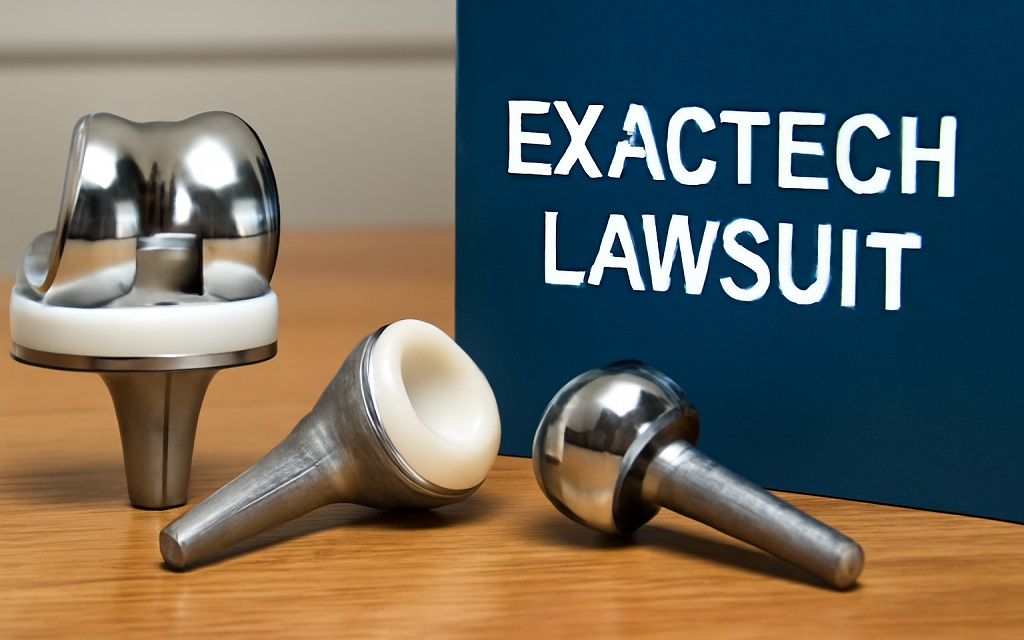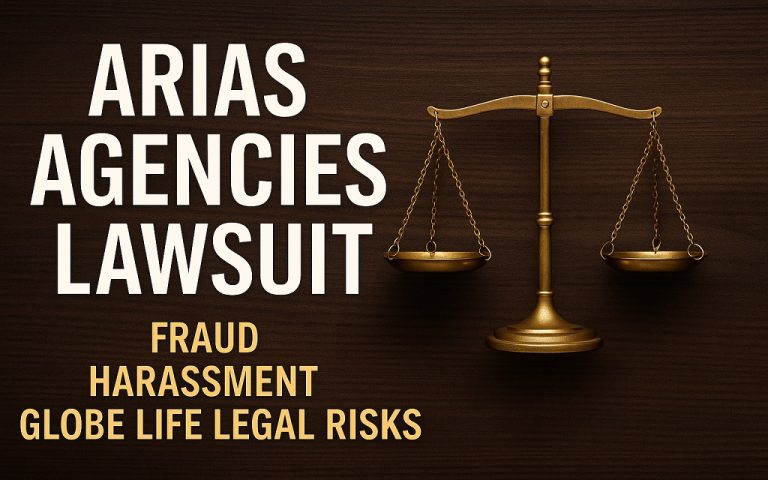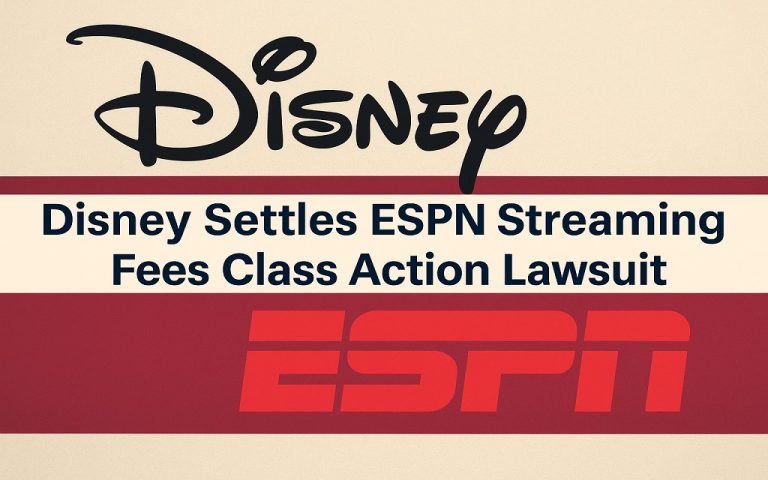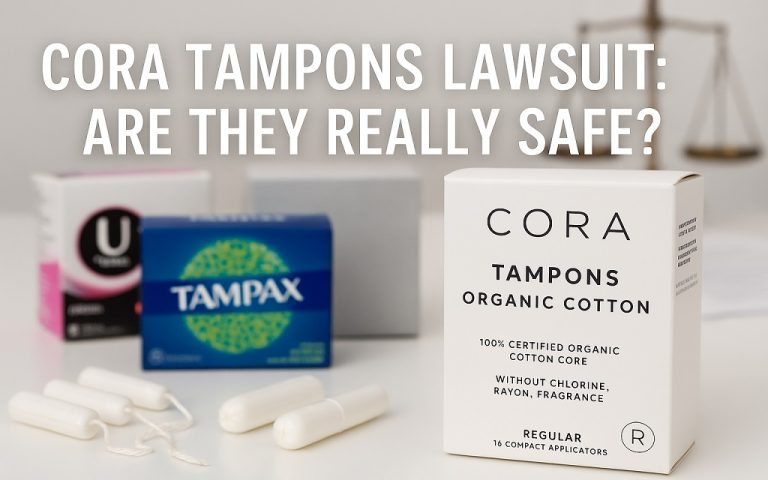You may face problems with your Exactech implant. This affects you if you received a hip, knee, or ankle implant between 2004 and 2022. Exactech recalled thousands of these devices in an Exactech lawsuit. They found a significant defect. This flaw caused the implants to fail early.
It forced many patients to undergo painful revision surgeries. The issue involves the polyethylene liners. Exactech uses these parts in many of its devices. Oxygen exposure during shipment damaged them. This caused the liners to break down too fast. This problem caused pain and joint instability. Many people suffered other serious side effects.
You should know that you may qualify for compensation. This applies if you had these severe problems. This article details the Exactech lawsuit. We cover how this recall affects your life and your health. You will learn the specific next steps you should take now. You need to understand your rights regarding this defective medical device.
Exactech Lawsuit Overview
You should be aware that thousands of patients in the US are affected by the Exactech lawsuit. The business recalled several implant systems used in hip, ankle, and knee replacements. The central issue is the oxidation of polyethylene inserts. Improper packaging allowed oxygen exposure before the implant ever entered your body. This defect caused premature wear, joint instability, and painful surgical failure.
You may qualify for compensation if:
- You received a recalled Exactech device between 2004 and 2022
- You suffered from joint pain, loosening, or implant instability
- Your doctor recommended revision surgery, or you have already had your implant replaced.
- You can retrieve basic medical records from your surgery.
It is essential to recognize that a federal multidistrict litigation currently has thousands of claims (MDL 3044). Exactech filed for bankruptcy in late 2024 in accordance with Chapter 11 of the US Bankruptcy Code. The court approved a Litigation Trust, which allows injured patients to recover damages still.
Additionally, you should be aware that the US government stepped in. The Department of Justice announced an $8 million settlement with Exactech on September 16, 2025. The prosecution accused the business of intentionally selling faulty joint implants to hospitals that submitted Medicare bills.
You should act fast. The statute of limitations may apply based on the date of your implant or revision.
What Is the Exactech Lawsuit About?
You should understand the lawsuits center on faulty packaging that led to oxidized liners in Exactech joint implants. These liners act as buffers between moving metal parts. They lessen friction and increase the longevity of the joint in a healthy implant. They degrade early and lead to significant difficulties in a flawed implant.
Why Did the Liners Fail?
Exactech utilized ultra-high-molecular-weight polyethylene (UHMWPE) for many of its liners. This sturdy material is made to withstand prolonged contact with metal implant surfaces. But when polyethylene is exposed to oxygen before surgery, it breaks down rapidly.
Exactech shipped tens of thousands of these liners in vacuum bags that lacked an EVOH (ethylene vinyl alcohol) oxygen barrier. As oxygen penetrated the bags, the liners oxidized on the shelf. Surgeons unknowingly implanted defective components. The results included:
- Early implant wear
- Liner disintegration
- Debris accumulation in soft tissue
- Bone loss (osteolysis)
- Painful revision surgery
According to orthopedic device safety studies published in 2023, oxidation increases UHMWPE wear rates by 65–80%, depending on storage conditions.
When did Exactech recognize the Issue?
In 2021, Exactech started notifying physicians, and in February 2022, a formal Class II recall was announced. There were more than 140,000 recalled devices. Many patients never received direct notice. They only discovered the issue when they returned to the doctor with symptoms or after national news coverage.
Which Devices Were Affected?
You need to be aware that Products from Exactech were recalled in three main joint categories: ankles, hips, and knees. In hospitals and surgery centers around the United States, these devices were utilized in thousands of orthopedic procedures.
What Knee Replacement Systems Were Recalled?
- Optetrak®
- Optetrak Logic®
- Truliant®
These systems used polyethylene tibial inserts or trays that were improperly packaged. In many cases, the surgeon would not know the liner was compromised before opening the sterile pack.
What Hip Systems Are Named in the Lawsuit?
Connexion GXL® Acetabular Liners
These liners had a separate issue involving accelerated in-vivo wear. Unlike the knee and ankle liners, Connexion GXL was not part of the vacuum bag failure. However, wear rates were higher than expected. Patients reported instability and early dislocation.
What About Ankle Devices?
Vantage® Total Ankle System
This implant used polyethylene inserts that are vulnerable to oxidation. Although total ankle replacements are less common than knee or hip replacements, many patients have already reported failure and revision surgery.
In an Exactech report submitted to the FDA, the company estimated failure rates at 10% to 20% within five years for certain recalled knee and ankle systems.
How Can You Confirm Your Implant?
You should request your operative report and implant labels from your hospital. Your surgeon may have recorded the model name and serial number. You can also use the Exactech device check portal:
https://www.exac.com/recall
Hospitals were instructed to contact affected patients. However, many surgeons retired, relocated, or failed to follow up.
What Symptoms Suggest Your Exactech Implant May Be Failing?
You should listen to your body. Many patients notice gradual symptoms after an implant fails. Others experience sudden problems. It is essential to track all physical changes after surgery.
What Early Signs Should You Watch For?
- New or worsening pain
- Joint instability during walking or standing
- Clicking or grinding sounds in the joint
- Reduced flexibility or joint stiffness
- Swelling around the surgical site
These symptoms may appear months or years after surgery. Many patients believe the pain is a regular part of the process. It often is not. If your implant used an oxidized liner, it may be breaking down faster than expected.
In a 2024 orthopedic study, researchers found oxidized knee liners produced surface cracks within 12 months, even in low-activity patients.
What Late-Stage Symptoms Suggest Serious Failure?
- Sharp pain during movement
- Complete joint dislocation
- Implant shifting or visible deformity
- Frequent falls due to instability
- Fluid build-up or infection
- Severe muscle weakness
You should never ignore these signs. Medical imaging may confirm:
- Liner deterioration
- Bone loss (osteolysis)
- Radiolucent lines
- Component migration
What Should You Do First?
You should contact your surgeon or primary care physician and request imaging tests, such as X-rays or MRIs, to assess the condition. Ask about revision surgery. Then, you should contact a lawyer if you confirm your implant is among those recalled.
How Do You Know If You Qualify for an Exactech Lawsuit?
You should check a few simple facts. The type of implant, the date of the operation, and the symptoms encountered all influence the admissibility of a lawsuit. Legal teams usually screen your case at no charge.
What Are the Basic Eligibility Criteria?
- You had a knee, hip, or ankle implant between 2004 and 2022
- Your device matches an Exactech recalled product
- You suffered pain, instability, or surgical failure
- You already had a revision surgery, or a doctor recommended one
You should not worry if you don’t remember the implant brand. A lawyer or medical records provider can help retrieve your surgery documents.
Do You Need to Have Revision Surgery to Qualify?
Not always. You should still reach out if:
- You have constant pain or use a cane
- Imaging shows linear wear or implant migration
- Your doctor said the implant might fail soon
- You were told your liner oxidized or broke down prematurely
A 2023 MDL case report showed that over 35% of qualifying plaintiffs had not yet undergone revision surgery. They filed based on symptoms and imaging alone.
What if You Had Surgery Years Ago?
You may still qualify. The courts use the “discovery rule”. That means the lawsuit clock starts when:
- You first learned your implant was defective
- You had a revision procedure due to early failure
- You received notice that your implant was recalled
You should speak with an attorney to review your timeline. Filing late could forfeit your claim.
What Legal Claims Are Filed Against Exactech?
You should be aware that injured patients often employ multiple legal theories in court. These allegations are covered by product liability law. This suggests that the emphasis is on manufacturing errors, design flaws, and inadequate user warnings.
What is a Claim of Defective Design?
You should understand that a defective design means the product was dangerous from the start. Plaintiffs claim Exactech used a liner material that broke down under oxygen exposure. The packaging system did not protect the product during storage.
Medical device law specialists note that design defects are often proven when a safer alternative existed. Some competitors used better oxygen barriers or tested liners for long-term durability.
What Is a Manufacturing Defect?
This claim focuses on the process by which the liner was made. It is crucial to demonstrate that Exactech did not adhere to FDA standards. Improper bag sealing, storage problems, or missing inspections can support this claim.
What Is Failure to Warn?
Plaintiffs allege Exactech:
- Did not inform doctors quickly after discovering liner issues
- Sent limited notices instead of full public recalls
- Delayed disclosure of shelf-life limits
- Failed to issue patient-wide letters
You may still qualify even if your doctor never mentioned the recall.
What Are Breach of Warranty and Negligence Claims?
You should know:
- Exactech made promises about durability in product literature
- Many patients expected a device to last 10 to 15 years
- Some failed within 2 to 3 years, violating that expectation
- Doctors trusted Exactech’s testing and shelf-life statements
Courts often allow breach claims when patients suffer from early device failure and the company failed to adequately test the device.
What Is MDL 3044 and Why Does It Matter to Your Case?
You should understand that MDL 3044 refers to a federal multidistrict litigation proceeding for Exactech lawsuits. It consolidates thousands of patient claims into a single court for efficiency and fairness.
What Court Handles the MDL?
- Court: U.S. District Court for the Eastern District of New York
- Presiding Judge: Hon. Nicholas G. Garaufis
- Magistrate Judge: Marcia M. Henry
- MDL Number: 3044
- Created: October 2022
You should be aware that this court oversees all pre-trial steps. These include:
- Coordinated discovery
- Shared medical expert reviews
- Early bellwether trials
- Mediation or settlement discussions
What Is a Bellwether Trial?
It is crucial to know that bellwether trials are sample cases. The court selects them to test common facts. Jury verdicts in bellwether trials help both sides:
- Estimate case values
- Settle similar claims
- Avoid thousands of separate trials
In a 2024 MDL update, the court confirmed that over 1,500 active plaintiffs joined MDL 3044 before the bankruptcy pause.
What Are the Benefits of Joining the MDL?
You may:
- Avoid repeated expert testimony
- Share evidence and court costs
- Access common legal arguments
- Avoid delay in individual courts
Your attorney still handles your case personally. MDL coordination helps speed up the system.
You should not confuse MDL with a class action. Each Exactech plaintiff maintains a separate claim and damage amount. You still get your own settlement or verdict.
What Did the DOJ Find in Its Exactech Settlement?
You should know that the Department of Justice launched a civil investigation under the False Claims Act. On September 16, 2025, the U.S. Attorney’s Office for Maryland announced an $8 million federal settlement with Exactech.
What Was the Allegation?
Federal investigators claimed Exactech:
- Sold defective orthopedic implants
- Caused hospitals to submit false claims to Medicare
- Failed to disclose known issues with tibial trays and liners
- Continued to market the devices despite risks
Hospitals billed Medicare for surgeries using devices Exactech knew could fail early.
The DOJ stated, “Exactech’s conduct created unnecessary risks and drove up taxpayer costs.” The company resolved the case without admitting liability.
What Devices Were Involved?
- Certain tibial trays were sold from 2008 to 2018
- Logic and Truliant liners sold until February 7, 2022
These overlap with devices named in the civil lawsuits. You should know the DOJ used whistleblower evidence and internal company documents.
Does This Settlement Help Civil Plaintiffs?
Yes. It supports the argument that Exactech distributed defective products. It also indicates that the company was aware of product flaws. You can use this in your own case to strengthen claims of negligence and failure to warn.
What Happens to Your Case After the Exactech Bankruptcy?
You should be aware that Exactech declared Chapter 11 bankruptcy in October 2024. This court-supervised procedure resulted in a restructuring and a halt to ongoing litigation.
What Is Chapter 11?
It allows companies to:
- Freeze debt collection
- Reorganize operations
- Create a trust to handle lawsuits
- Sell assets to new owners
- You should not panic. The court confirmed that a Litigation Trust will handle patient claims. If you qualify, your case will still proceed through that process.
Where Did Exactech File?
- Court: U.S. Bankruptcy Court for the District of Delaware
- Case No: Confirmed in official filings
- Oversight: Independent bankruptcy judge
In a March 2025 status hearing, the court approved Exactech’s plan to sell core assets to its private equity backer while funding the Litigation Trust with proceeds.
What Is the Litigation Trust?
This trust acts as the defendant in all future lawsuits. It allows:
- Claimants to submit damages
- Lawyers to negotiate with trust administrators
- Courts to review and approve awards
You should work with your attorney to transition your case into the trust system. This ensures you remain eligible for settlement.
Does the Bankruptcy Cancel Your Rights?
No. You should know that trust preserves your rights. However, you may face new deadlines. You should contact your lawyer immediately if your case is on hold during the bankruptcy.
What Compensation Can You Receive in an Exactech Lawsuit?
You should know compensation varies based on your medical history, surgery costs, and ongoing harm. Plaintiffs are permitted to seek both non-economic and economic damages in court. Punitive damages may also be granted in certain situations.
What Are Economic Damages?
You may recover:
- Implant and revision surgery costs
- Hospital stays and specialist visits
- Imaging, testing, and lab analysis
- Physical therapy and rehabilitation
- Travel expenses for medical care
- Lost wages due to missed work
- Reduced ability to earn in the future
You should keep receipts, EOBs, and pay stubs. These support your financial loss claim.
Depending on the severity of the modification, plaintiffs in Exactech knee failure lawsuits filed prior to 2024 sought average medical-related damages ranging from $45,000 to $110,000.
What Are Non-Economic Damages?
You may also request payment for suffering, not tied to bills. This includes:
- Chronic pain
- Emotional distress
- Loss of quality of life
- Difficulty performing daily activities
- Anxiety or depression
- Sleep disruption
You should describe your physical and mental impact in detail. Doctors, therapists, or family members may write supporting statements.
When Do Courts Award Punitive Damages?
You may qualify if the court finds:
- Intentional concealment of a defect
- Reckless disregard for safety
- False or misleading product information
These awards punish the manufacturer and signal serious wrongdoing. Some states cap punitive damages. Others tie them to a multiple of your economic losses.
According to injury law journals, average punitive awards in medical device cases exceed $500,000, when granted.
What Evidence Helps You Win an Exactech Lawsuit?
You must present proof of hardship, surgical records, and medical records—your chances of victory increase with the strength of your evidence.
What Medical Records Should You Submit?
You should collect:
- Initial surgical notes and procedure codes
- Implant stickers or serial numbers
- Operative reports from revision surgery
- Radiology reports (X-rays, MRIs, CT scans)
- Clinical notes showing symptoms over time
- Surgeon’s explanation of device failure
Hospitals keep these records in your file. Your attorney or a third-party retrieval company can request them with your signature.
What Financial Proof Helps Your Case?
You may include:
- Medical bills and insurance statements
- Receipts for therapy or assistive devices
- Proof of travel costs for appointments
- Work absence records
- Payroll history showing reduced earnings
You should organize these chronologically. That helps your lawyer track damages clearly.
What Personal Proof Adds Value?
You should write a timeline of your pain. Include:
- When symptoms started
- How the device failure changed your mobility
- What activities can you no longer do
- How did the implant failure affect your relationships
Family members may also provide statements. You may include photos of assistive devices, walker use, or surgical scarring.
In recent product liability cases, courts weighed patient journals and family testimony heavily during settlement reviews. These materials increase credibility and humanize the claim.
What Does a Typical Exactech Lawsuit Timeline Look Like?
You should prepare for several steps. Every case moves through a similar order, from intake to possible payout. Some claims resolve quickly. Others take time, especially if they involve multiple revision surgeries or trust distribution delays.
What Happens During Case Intake?
You contact a law firm. They conduct:
- Initial screening
- Eligibility check
- Implant verification
- Consent forms for records
If your case meets basic criteria, they assign it to their product liability team. You pay nothing up front.
What Happens After Filing?
Once filed in court or registered with the litigation trust, the firm:
- Reviews your records
- Assembles medical experts
- Prepares complaint documents
- Sends the file to Exactech’s legal team or trust administrators
If your case is part of the MDL, it follows federal scheduling guidelines. If your case enters the post-bankruptcy trust, it follows trustee timelines.
A 2025 MDL docket analysis shows average claim preparation time from intake to formal filing was 90–120 days for cases with complete documentation.
What Happens Before Resolution?
You may:
- Receive a trust award offer
- Enter settlement negotiations
- Provide deposition testimony (if requested)
- Submit medical evaluations
- Wait for bellwether trial outcomes (if in MDL)
Some cases settle in six months. Complex revision cases may take longer.
It’s critical to maintain close communication with your attorney throughout the process.
Which State-Specific Factors Should I Be Aware of?
Please note that your case may be affected differently by state legislation. There are state-specific variations in the filing deadlines, damage caps, and lawsuit procedures. Knowing these specifics will help you avoid missing critical legal deadlines.
Exactech Lawsuit Statute of Limitations
The maximum amount of time you have to bring a case is specified by the statute of limitations. States have their own laws. For instance:
- California: either three years following the date of operation or two years following the discovery of the injury
- Florida: 4 years from the injury date
- Texas: two years following the condition’s diagnosis or the start of symptoms
If you wait too long, you may lose your right to reimbursement. Verify deadlines with your lawyer at all times.
State laws about suffering and pain
Some states limit or cap non-economic damages, such as pain and suffering. These caps vary:
- New York: No cap on pain and suffering damages
- Michigan: $550,000 non-economic damage cap
- California: It has a $250,000 cap on medical malpractice lawsuits, but Exactech is exempt. It is crucial to consider how your case would be evaluated.
Your lawyer can explain any limits your state may have and how they could impact your case.
Why Does State Law Affect Your Claim?
- Evidence collection: Early in the procedure, several jurisdictions demand the submission of specific documents.
- Jury convictions: Pain and suffering jury verdicts may be higher in states with more lenient laws.
- File logistics: Your lawyer will present your claim to the proper court in compliance with state-specific laws.
Where Should You File Your Exactech Lawsuit?
If your case is part of MDL 3044, it will be filed in the Eastern District of New York. However, if you file independently or through the bankruptcy trust, your state law may apply. An experienced lawyer will advise you on the best strategy.
Downloadable Checklist: Your Exactech Lawsuit Filing Essentials
To help you organize everything for a potential lawsuit, we’ve created a Downloadable Checklist. This includes:
- Surgical records and implant details
- Medical bills and wage loss documentation
- Witness statements and family testimonies
- Symptom logs or daily pain journals
- Imaging reports showing implant failure
Don’t forget to get this checklist now. You can improve your chances of success and expedite your legal process by keeping everything in one location.
FAQs
What is the lawsuit against Exactech?
The lawsuit claims that Exactech’s ankle, hip, and knee implants had manufacturing defects that led to premature failure and significant health problems for patients.
Who is the CEO of Exactech?
After the closure of Exactech’s asset sale, Aurelio Sahagun is scheduled to take over as CEO in August 2025.
Which knee replacements are recalled?
Exactech recalled several knee replacement systems, including Optetrak, Optetrak Logic, and Truliant, due to defective packaging that caused the polyethylene inserts to degrade prematurely.
What is the Exactech problem?
The primary issue with Exactech implants is their defective packaging, which allows air to enter and oxidize the polyethylene liners, resulting in early failure and wear.
Conclusion: What happens next?
Please reply promptly if you suspect you may have received a faulty Exactech implant. There might be a deadline for submitting your claim. The actions you should take are as follows:
- Speak with an experienced lawyer: Numerous firms will assess your case for free and give free consultations.
- Assemble medical records: Request your surgical and implant records first.
- Before the statute of limitations expires, take action: Deadlines vary by state. Don’t miss the chance to earn money.
The Exactech lawsuits represent a serious issue affecting thousands of patients. Whether you are suffering from ongoing pain or you’ve already had revision surgery, you should not wait to take legal action.
Disclaimer: This article provides a general overview of the Exactech lawsuit, based on publicly available information, and is intended for informational purposes only. It is not legal advice.




